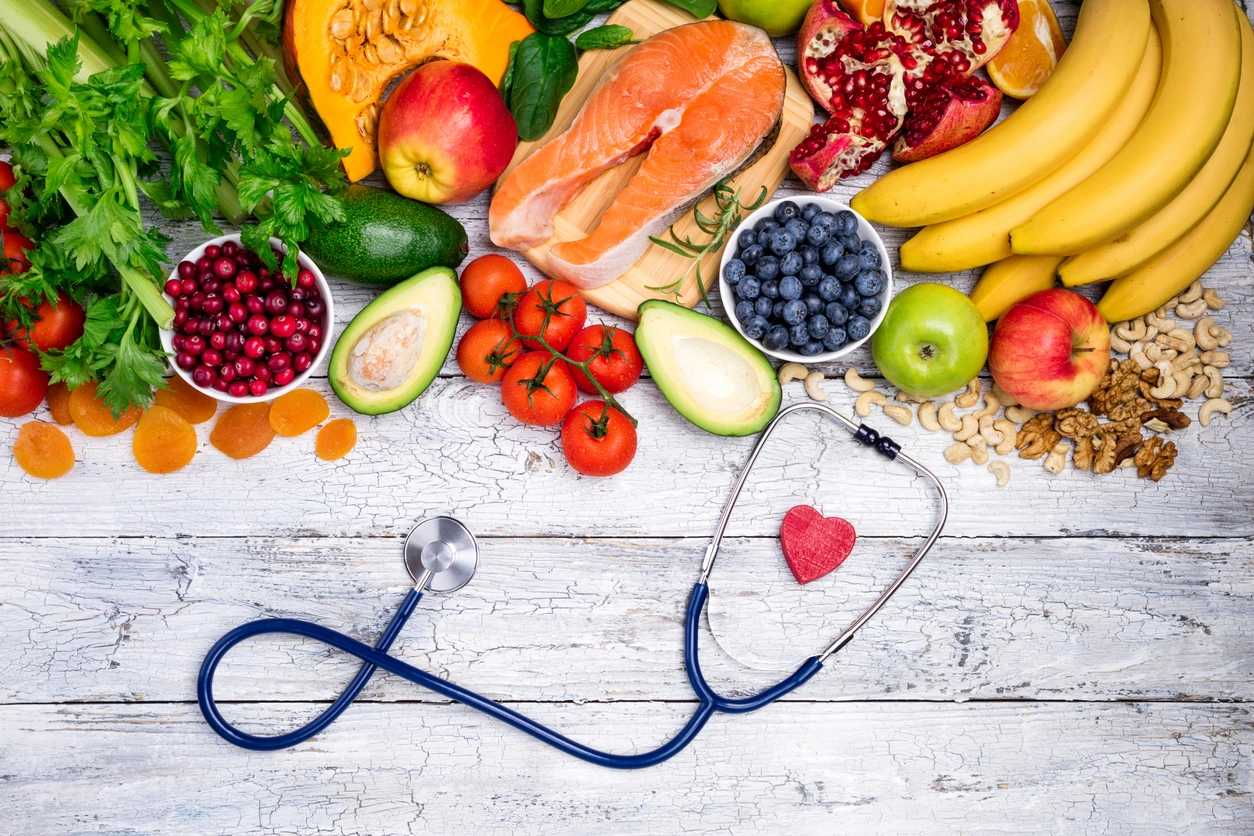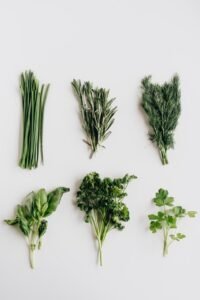| ✨Hey there! This post may contain affiliate links, meaning we earn a commission if you make a purchase through our links, at no cost to you. Please read our disclosures for more info. |
Table of Contents
Food Abundance and Availability
Incorporating More Fruits & Vegetables in your Diet
The Chromatic Diet – Foods with Phytochemicals
Your new Nutritional Journey to renewed health and wellbeing.
Chromatic Diet as a Lifestyle
A Chromatic diet is like eating the “rainbow“, and no we aren’t talking about candy; it is a diet that can prove to have the most health benefits of any other dietary plans. As new diets pop up every day, more and more people are becoming aware of the effects that food can have on their bodies and minds.
Fad diets have been around for a while, and now more than ever they’re being taken up by everyone looking to find what works best for them. Each person wants to find what makes them feel good: physically, mentally, and spiritually. Not to mention, also avoid any adverse health effects, and intolerance issues.A Chromatic diet is much more than just a fad diet, it is a lifestyle that could prove to be successful for all facets of your life.
Chromatic diets focus on expanding your food profile and range by incorporating whole foods that are rich in color, thus securing a wholesome phytochemical-rich nutritional profile. Food Abundance and AvailabilityThanks to the import/exports of food, our food options have become more diverse and varied than any other time in human history.
At our local food markets, we have layers and layers of seasonal fruits, exotic foods, designer mushrooms, and cruciferous vegetables that are transported from all over world from their original harvest location thanks to modern transportation methods.
Even foreign crops that couldn’t be grown domestically, can now be grown on US soil with climate control technology and soil composition. Growing your own food is also an eco-friendly option, as it puts less pressure on the commercial food supply chains, and gives more control over the quality of the foodstuffs. It’s truly fascinating what we’ve accomplished as a species.
With this extensive availability of foods, it should be easier to manage diets for more optimal nutrition and less chronic diseases.
The Rise of Chronic Diseases
Yet, we the human species continue to suffer from more ailments then ever before. The number of illnesses that have been discovered by doctors and researchers over the past decade are substantial compared to the public health statistics of the 1980s.
- Several types of cancer are on the rise and are expected to double over the course of decade.
- By 2025, over 49% of the American population will have some form of chronic illness¹.
- Thirty-one percent (31%) of the population will have Diabetes by 2030.
- According to a CDC study, 9 of 10 Americans don’t eat the daily recommended servings of fruits and vegetables.
That’s terrible! With the amount of information available to us as consumers, good health should be at it’s prominence. For in-depth disease prevention, read the 2020 International Food Information Council’s Food and Health Survey for 2020 here.
Reduced Nutrient Absorption
Most, if not all people are well aware that genetically modified food exists and is prevalent in our food supply chains. GMO food affects our bodies at a cellular level, and many important bodily functions can be adversely impacted by the gestation of these products. One major concern with GMO food is the reduced nutrient absorption in the body.
Being more conscious about how you eat and what kind of food you eat, could mean the difference between optimal health versus poor health. This is where a Chromatic Diet can provide insight and guided advice on proper dietary sustenance.
The Chromatic Diet Guide is here to help you on your new and improved nutritional journey!
The following section contains affiliate links.
The Chromatic Diet Guide
The Chromatic Diet Guide is a dietary framework that offers a variety of eating from day today. A diet like this can be great for those people who have trouble sticking with one set way of eating because they’ll never run out of new things to try. Not only will it promote good health, but it will also allow you to enjoy many different kinds of food. If taken seriously, following the Chromatic Diet Guide will make you feel better than ever before!
This guide has four parts:
The Introduction and Basics cover the foundations of chromatic diets, including why some people may not do well with traditional diets and how the Chromatic Diet can be a viable alternative.
Choosing Your Own Food Colors is where you learn about maximizing your nutrition by using whole foods that are rich in color & phytonutrients (also known as phytochemicals).
The third part of this guide, How to Incorporate more Fruits and Vegetables in your diet provides plenty of delicious combinations for chromatic recipes to help you get started on your diet.
Finally, there is the Frequently Asked Questions (FAQ) section that will answer questions about the diet. You can follow this link directly to the F.A.Q.s.
What is a Chromatic Diet?
Chromatic Foods are whole foods that have colors such as red cherries, oranges, blackberries, blueberries, yellow bananas, green spinach, and so forth. A Chromatic Diet would entail eating as much colorful food as possible, every day. The concept does not restrict white foods but promotes a fruit and vegetable inclusive healthy lifestyle.
The Chromatic Diet is akin to the 5-a-day campaign that was launched in 1988, where the National Cancer Research Center recommended that people eat 5 vegetable and fruit servings a day in an effort to promote a healthy diet.²
In 2005, the CDC took the lead in the 5-a-day program to further the goal of getting more people to eat their colorful fruits and vegetables. The CDC’s 5-a-Day Works! publication has information for every state program, where individuals could learn more about better nutritional guidance.
The chromatic diet may not be a popular or well-known diet, but “there is scientific evidence in support of the beneficial role of phytochemicals in the prevention of several chronic diseases”.³ Phytochemicals are the components of those superfoods that are often seen in health magazines and articles – but many people do not know what a phytochemical actually is. This is information that should be considered when planning your nutritional journey.
The scientific research from Clinical Aspects of Functional Foods and Nutraceuticals By Tetsuya Konishi published in 2014 reported that “bioactive phytochemicals from various fruits and vegetables can lower the risk of stroke” and that “most phytochemicals act as antioxidants”. Essentially, this food plan can help the body better heal itself and prevent diseases and is as easy as eating food in a chromatic fashion.
Choosing your Own Food Colors
The Chromatic Diet is not eating one color a day, as implied by an art exhibition but actively incorporating as many foods of color into your diet as possible. Every color of food has chemical compounds that create chemical reactions in our bodies. There are over 1000’s of bio-chemical reactions in our body at any given time. Some are very familiar to us, while others are not as well known or discussed.
For example, Carrots contain carotenes, a phytochemical that plays an essential role in the production of retinol (a Vitamin A in the body), and is important for maintaining the proper function of certain physiological systems such as the immune system, optimal eyesight, the mucous lining of the intestines.⁴
Carotenes are also thought to be cancer preventative. “Epidemiological studies have shown a correlation between a high carotenoid intake in the diet with a reduced risk of breast, cervical, ovarian, colorectal cancers, and cardiovascular and eye diseases”.⁵
Carotenoids are the plant derivative of carotene molecules, as opposed to Retinoids which are the animal derivative of carotenes. This is important for vegetarians and vegans to know, as animal foods often contain carotenes in the form of retinoids. However, if you are less concerned with the origin of your food and are more concerned about the phytochemicals they contain, then this may be an important factor for you when choosing your chromatic meals.
In the last century, there has been a rapid increase in our knowledge of phytochemicals. There are over 150 that have been studied thoroughly out of 4,000 identified ones. New research is being done to discover more about why these plants produce phytochemicals and what they do for us as humans.
Another set of phytochemicals that may sound familiar and has gained some popularity are flavonoids. Flavonoids consist of 6 subgroups of phytochemicals with anti-inflammatory and antioxidant properties. Sources of flavonoids are plenty and all include whole foods such as parsley, blueberries, black beans, onions, apples, and citrus fruits.⁶ Please note that each color has its own compounds in differing quantities.
Parsley, for example, has the highest concentration of one type of flavonoids known as flavones, specifically called Apigenin. Apigenin is used in the body, they are known to bind with over 160 different kinds of protein molecules, as well as neutralize free radicals. Knowing which foods to eat is only part of a healthy diet; knowing how they work on our cells and why we need them can help us make healthier choices for ourselves.
The Chromatic Diet consists of incorporating more bio-active phytochemicals into the body through eating more colorful foods. The bio-chemicals (previously referred to as phytochemicals) found in these specific chromatic foods have been proven to support a healthy body, and are known to act as cardio-protective agents. As long as you can tolerate different colors of food, there are no restrictions or rules to follow. Consume at least 8-12 different colored foods in your daily diet, and you will be actively contributing to a healthier body.
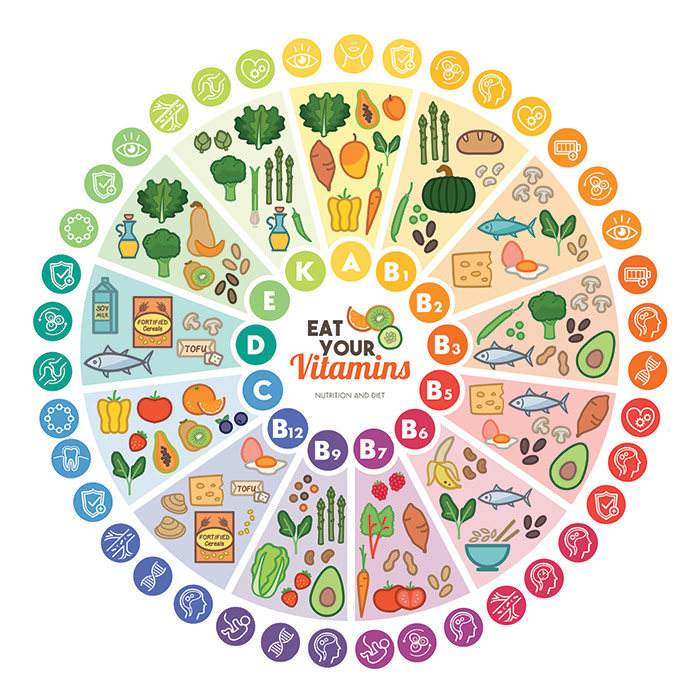
Incorporating More Fruits and Vegetables in your Diet:
Recipes for eating a chromatic diet can be simple or complex, depending on your preferences. Start slowly by adding one new colored food per week into your meals until you have mastered the “chromatic” art of cooking. There are many ways to incorporate colorful foods and spices into your dishes:
Some examples of chromatic foods:

Turmeric
So vibrant it almost looks radioactive! Turmeric’s bio-chemicals are known to be anti-carcinogenic and have been used for centuries in multiple cultures. Turmeric contains Curcumin, a chemical that has antioxidant properties without being toxic, with “studies [that] have indicated the safety of Curcumin at doses as high as 12 g/day over 3 months”.⁷ This orange spice is commonly found in rice cookery, Indian and Asian cuisine, and is also the active ingredient in many over-the-counter anti-inflammatory medications.
Put a little orange turmeric in your cup of tea or coffee for a little earthy texture in your beverage.
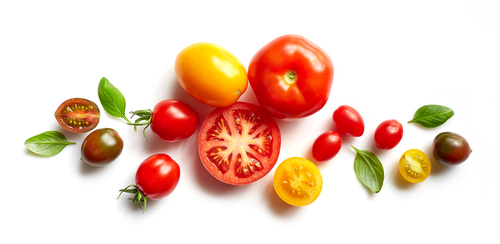
Tomatoes
The colors of the rainbow, all blended into one exotic-looking fruit! Tomatoes are naturally a bright red/orange color (and other colors as well). Each different hue contains differing bio-chemicals that each have their own health benefits, “studies have confirmed that the carotenoid content in tomato fruits could be determined by genotypic characteristics”. ⁸ Lycopene is the most famous bio-chemical present in tomatoes. Tomatoes are also known to be high in Vitamin C and beneficial for the skin.
Tomatoes compliment also every meal, from breakfast eggs to dinner salads, it’s best when made into fresh salsa.
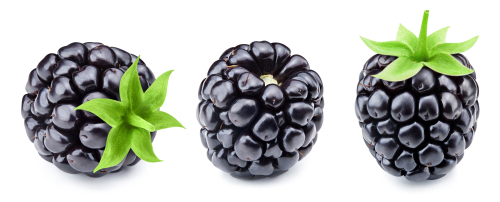
Blackberries
The naturally occurring water-soluble bio-chemicals, Anthocyanins, give this berry their beautiful purple pigment. The chromatic qualities of these berries are just one of the many reasons that they make a healthy fruit choice.
Their anti-inflammatory properties help ease inflammation throughout the entire body, including “protection against liver injuries; significant reduction of blood pressure; improvement of eyesight; strong anti-inflammatory and antimicrobial activities; inhibition of mutations caused by mutagens from cooked food; and suppression of proliferation of human cancer cells.” ⁹ They also have cancer-fighting compounds, cardiovascular protective phytochemicals, and antioxidants protecting us from free radical damage.
A handful of blackberries a day, is essential to optimal health. Meet your daily chromatic diet quota, by eating dark fruits.

Sunflower Seeds
Folate (Vitamin B-9) is one of many bio-chemicals strongly present in peanuts and sunflower seeds, and for those with nut allergies, also in lentils or spinach. It acts as an antioxidant protecting the body from free-radical damage and prevents cell mutation. Folate deficiency has been linked to genetic mutations that are the leading cause for cancer.¹⁰ In most cases, this vitamin deficiency is caused by a diet that does not include enough fruits and vegetables.
Excessive alcohol consumption can also exacerbate the deficiency by interfering with nutrient absorption. The problem of folate deficiency has to lead many government and health institutions to implement folate fortification programs, where foods have had synthetic folate added, known as folic-acid. The most commonly fortified food is wheat flour.
Sunflower seeds are the top best sources for folate, incorporate this seed into every-meal possible, or snack on it alone.

Sweet Potatoes
Biotin (Vitamin B-7) is another B-vitamin found in many fruits and vegetables, that is also strongly present in peanuts and sunflower seeds, but can also be found in sweet potatoes and broccoli. It is said to reduce the risk of developing type 2 diabetes by enhancing glucose metabolism.¹¹ Biotin is popular as a supplement, but is abundant in food sources so is not likely a deficiency.
Sweet Potatoes are an easy go-to dinner staple several times of the week, it is also very easy to grow in your backyard.
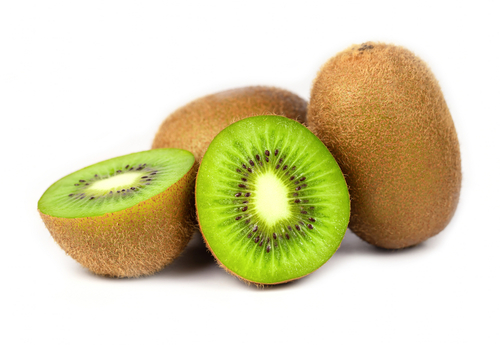
Kiwi
Everyone has heard of this antioxidant-rich fruit, but what about some lesser-known chromatic fruits? Kiwi is a fruit native to China and has such a strong antioxidant punch that it is included in many healthy diets. It contains “significant quantities of vitamins A, C, and E as well as being a good source of folate and potassium”.¹²
Incorporating more vegetables into our diets will not only give us a burst of color to brighten up our meals, but they will also add many health benefits such as the lower risk for heart disease and cancer, an increase in lifespan due to anti-aging phytochemicals, and antioxidant protective qualities without harmful toxic side effects like some medications have been known to possess. Be sure to try new vegetables each week until you find your own chromatic favorite! Below are some examples of different colored veggies.
Eating a Chromatic Diet can help address most underlying health problems. In fact, the best way to reduce your risk of chronic disease is by eating a wide range of phytonutrient-rich foods like leafy vegetables and cruciferous veggies.
These plant foods contain powerful antioxidants that protect our cells from oxidative stress damage or inflammation which are two major causes of cardiovascular diseases. By including these nutrient-dense recipes your their daily diet plan, you will be able to get essential nutrients while reducing your risk of heart disease at the same time!
Learn more about how a chromatic diet with the F.A.Q.s section here.
References
[1] Partnership to Fight Chronic Disease. The Growing Crisis of Chronic Disease in the United States https://www.fightchronicdisease.org/sites/default/files/docs/GrowingCrisisofChronicDiseaseintheUSfactsheet_81009.pdf
[4] Purdue University. (2015, July 9). Vitamin A directs immune cells to intestines. ScienceDaily. Retrieved July 5, 2021 from www.sciencedaily.com/releases/2015/07/150709132634.htm
[7] Gupta, S.C., Patchva, S. & Aggarwal, B.B. Therapeutic Roles of Curcumin: Lessons Learned from Clinical Trials. AAPS J 15, 195–218 (2013). https://doi.org/10.1208/s12248-012-9432-8
[10] Bruce N. Ames, “Prevention of Mutation, Cancer, and Other Age-Associated Diseases by Optimizing Micronutrient Intake”, Journal of Nucleic Acids, vol. 2010, Article ID 725071, 11 pages, 2010. https://doi.org/10.4061/2010/725071
[2] Konishi, T. (2014). Clinical Aspects of Functional Foods and Nutraceuticals. United States: Taylor & Francis.
[5] Milani, A., Basirnejad, M., Shahbazi, S., and Bolhassani, A. (2017) Carotenoids: biochemistry, pharmacology and treatment. British Journal of Pharmacology, 174: 1290– 1324. doi: 10.1111/bph.13625.
[8] Viskelis, Rasa Karkleliene and Ceslovas Bobinas (October 21st 2015). Biochemical Parameters in Tomato Fruits from Different Cultivars as Functional Foods for Agricultural, Industrial, and Pharmaceutical Uses, Plants for the Future, Hany El-Shemy, IntechOpen, DOI: 10.5772/60873. Available from: https://www.intechopen.com/books/plants-for-the-future/biochemical-parameters-in-tomato-fruits-from-different-cultivars-as-functional-foods-for-agricultura
[11] Turgut M, Cinar V, Pala R, Tuzcu M, Orhan C, Telceken H, Sahin N, Deeh PBD, Komorowski JR, Sahin K. Biotin and chromium histidinate improve glucose metabolism and proteins expression levels of IRS-1, PPAR-γ, and NF-κB in exercise-trained rats. J Int Soc Sports Nutr. 2018 Sep 15;15(1):45. doi: 10.1186/s12970-018-0249-4. PMID: 30219082; PMCID: PMC6139124.
[3] Rao AV, Rao LG. Carotenoids and human health. Pharmacol Res. 2007 Mar;55(3):207-16. doi: 10.1016/j.phrs.2007.01.012. Epub 2007 Jan 25. PMID: 17349800
[6] Kozłowska A, Szostak-Wegierek D. Flavonoids–food sources and health benefits. Rocz Panstw Zakl Hig. 2014;65(2):79-85. PMID: 25272572.
[9] Konczak, I. and Zhang, W. (2004) Anthocyanins—More Than Nature’s Colours. Journal of Biomedicine and Biotechnology, 5, 239-240. http://dx.doi.org/10.1155/S1110724304407013
[12] Richardson, D. P., Ansell, J., & Drummond, L. N. (2018). The nutritional and health attributes of kiwifruit: a review. European journal of nutrition, 57(8), 2659–2676. https://doi.org/10.1007/s00394-018-1627-z

